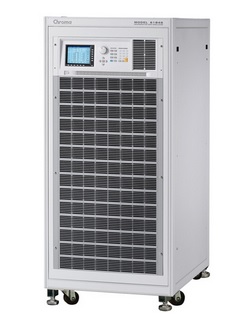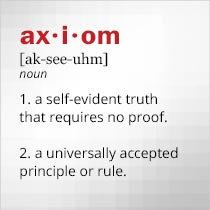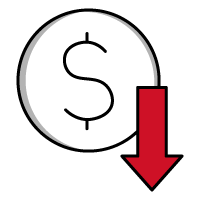Regenerative Grid Simulators Support Real-World Testing
October 15, 2020
 |
Electricity powers most lives and the electronic products within those lives. Electronic devices provide communications and many other conveniences, while electric vehicles (EVs) and hybrid electric vehicles (HEVs) are providing mobility to a growing number of drivers and passengers. Electronic devices draw power from the power grid surrounding them, supplied by utilities and regenerative sources such as wind turbines and photovoltaic (PV) solar panels. While electronic products are designed and developed with the help of traditional test equipment such as oscilloscopes, a different type of test instrument is needed for grid-connected device testing: the regenerative grid simulator. Such a tester makes it possible to know how a device under test (DUT) will perform under changing, real-world conditions when connected to the electric power grid.
Regenerative grid simulators are fundamentally AC power supplies many of which can also provide DC power. They typically operate over wide AC input voltage ranges and provide full four-quadrant control of AC power to emulate the behavior of an electric power grid under different and changing conditions, such as AC power with changing voltage, current, and frequency. The regenerative grid simulator takes the place of the power grid on which a DUT would normally be connected, making it possible to understand how it will perform under different operating conditions and according to different industry standards.
Since some DUTs may regenerate and feed power back into the electric power grid, such as the electrical power storage and charging components within an HEV or EV, a regenerative grid simulator is a power source that can also sink power from a DUT and feed it back to the power grid with high efficiency. This equips the simulator with the capability to serve as a test power source for DUTs that also produce power, such as those with a photovoltaic (PV) inverter or uninterruptible power supply (UPS). With its sourcing and sinking capabilities a regenerative grid simulator can operate and support testing of a DUT across a wide range of electric power grid conditions, even extremely transient conditions. Regenerative grid simulators capable of sufficient AC output voltages over required output frequency ranges are well equipped for performing many tests that are specific to EVs and HEVs, such as vehicle-to-grid (V2G) testing and energy-storage-system (ESS) testing
Whether programmed for automatic operation or manually controlled, regenerative grid simulators provide control of key electrical parameters such as AC voltage, current, and frequency. Many operate as single-phase or three-phase supplies and can independently adjust the phase of AC output waveforms across all four quadrants, enabling testing as an unbalanced three-phase AC supply or as multiple single-phase AC supplies. Regenerative grid simulators are typically characterized by maximum true power (in kW) and apparent power (in kVA) to provide users with levels that account for reverse currents and differences in power caused by testing inductive or capacitive loads sending power back to a DUT during the AC voltage cycle.
The practical measurement capabilities of a regenerative electric grid simulator are supported by the effectiveness of its detection circuitry to gauge excess power from a DUT and recycle that power back to the electric grid. Because they may be used over a wide range of operating conditions, regenerative gid simulators are well served by built-in protection circuitry to guard against over-current and over-voltage conditions. Additional functionality such as the capability to produce higher-order harmonics enables a regenerative grid simulator to perform total harmonic distortion (THD) testing while emulating an electric power grid source. As with other test instruments intended for automatic-test-equipment (ATE) applications, regenerative gid simulators should include computer control interfaces compatible with a current measurement setup, such as RS-232, GPIB, Ethernet, or Universal Serial Bus (USB) ports.
Surveying Grid Simulators
Practical regenerative grid simulators make it possible to test a DUT under all power conditions that might occur on an electric power grid, even when loads are nonlinear. The Chroma 61830 regenerative grid simulator for example, includes harmonic synthesis capability and can synthesize outputs with harmonics as high as the 50th order (based on 60-Hz fundamentals). It offers user-selectable single-phase or three-phase operation with precise control of output voltage from 0 to 300 V. It can deliver maximum power of 30 kVA or 10 kVA per phase with maximum current of 150 A per phase or 450 A peak current. It is also capable of maximum DC outputs of 15 kW, 424 V, and 75 A in single-phase mode and 5 kW, 424 V, and 25 A per phase in three-phase mode. When higher output levels are required, the outputs of multiple model 61830 systems can be combined, with one unit controlling the others in a “master-slave” configuration.
Model 61830 is rated for maximum inputs of 125 A per phase from 200 to 220 V, 65 A per phase from 380 to 400 V, and 58 A per phase from 440 to 480 V, for input frequencies of 47 to 63 Hz. This versatile regenerative grid simulator can characterize electrical power as well as produce it, with measurement accuracy of 0.2% + 0.2% of the full-scale reading across a measurement range of 0 to 300 V.
When measurement requirements are constantly changing, the NH Research (NHR) 9410-12 regenerative grid simulator is a modular tester with programmable current and voltage limits that can be upgraded in the field when higher power is needed. It provides full four-quadrant operation and can be configured with one to three output channels and for single- and three-phase power. It is capable of 12 kW maximum single-phase power and 24 kVA maximum three-phase power, the amount of power provided by each module. A 9-in. touch-panel user interface eases the control of the unit and, with its integral harmonic waveform generator, it can perform power-line-disturbance (PLD) simulations.
Highly integrated testers such as the Chroma and NHR regenerative grid simulators provide high performance and the convenience of all required test functions within one housing. They are programmable and versatile power sources for regenerative grid simulation although similar testing can also be performed with the right set of programmable power supplies and AC loads. As an example, the Chroma 61512 programmable AC power source and the NH Research 9430-24 regenerative AC load team quite well for regenerative grid simulation testing within their operating ranges. The Chroma 61815 operates in single-, split-phase, and three-phase modes with maximum power of 15 kVA; multiple units can be combined in master-slave configurations to achieve higher output power as needed. As with many of the regenerative grid simulators, the NH Research 9430-24 current-regulated regenerative AC load works in in single-, split-phase, and three-phase modes and features four-quadrant, bidirectional operation for performing reactive electrical power testing. It is one of eight different-sized regenerative four-quadrant AC loads in the series rated for maximum power levels from 4 to 96 kW. It features programmability for constant-voltage, constant-current, constant power, and constant resistance DC loading modes in any combination. It is rated for maximum power of 24 kW and is designed to accurately simulate reactive electric power flows at high power levels.
The simulators, AC power supplies, and AC loads detailed here are a few examples for performing reliable and accurate regenerative grid simulation for a wide range of DUTs and operating conditions. Representative simulations examine both continuous and changing, transient power conditions and provide the means to adjust the amount of power-supply distortion provided to a DUT as well as slew rate for changing AC and DC waveforms. Test requirements can vary widely across even one portion of an electric power grid and for different DUTs, establishing the performance levels and capabilities needed for optimum testing with a regenerative grid simulator.
More information on regenerative grid simulators and simulation solutions with multiple instruments can be found on the Axiom Test Equipment website, by contacting Axiom Test Equipment’s sales department at sales@axiomtest.com, or by calling an Axiom sales representative at 760-806-6600.
Back to BLOG








